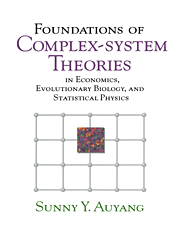Book contents
9 - Stochastic Processes and Their Explanations
Published online by Cambridge University Press: 11 May 2010
Summary
The Calculus of Probability and Stochastic Processes
The probability calculus finds application in a large and expanding class of empirical theory in the natural, social, and human sciences. What general features do the diverse topics share that make them susceptible to representation by the same mathematics?
Chance is an easy answer; probability is intuitively associated with chance. Easy answers are often wrong. Chance is not among the primary or secondary concepts of the probability calculus; it does not even have a clear definition there. The clue to the common features of the sciences that employ the probability calculus lies in the structure of the calculus, not in its name; thus it is misleading to call its application the “laws of chance” or the “empire of chance.”
The first ideas introduced in the axioms of the probability calculus are that of part and whole and that of the relative magnitudes of the parts. Probability is technically defined as a relative magnitude. The most general feature of probabilistic systems is that they are composite. Various limit theorems and laws of large numbers show that the calculus is most powerful for large or infinite composite systems. Large composite systems are usually very complex. The probability calculus is adept in treating a special class of relatively simple system, the constituents of which are independent of each other. Independence is the chief meaning of randomness in the calculus, and it is often posited as an approximation that simplifies the theories of realistic composite systems.
- Type
- Chapter
- Information
- Foundations of Complex-system TheoriesIn Economics, Evolutionary Biology, and Statistical Physics, pp. 269 - 312Publisher: Cambridge University PressPrint publication year: 1998



